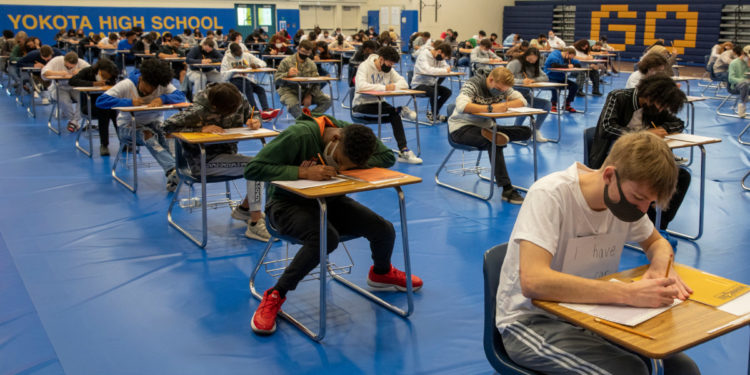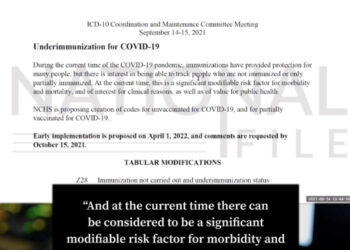Last Updated on December 18, 2022
The 2022 mathematics test scores for United States primary school students decreased by the largest margins in the 53-year history of the National Assessment of Educational Progress (NAEP). “The results show the profound toll on student learning during the pandemic, as the size and scope of the decline are the largest ever in mathematics,” National Center for Education Statistics (NCES) Commissioner Peggy G. Carr said.
Native Americans saw the largest drop in reading scores for fourth-grade students, with a decrease of seven points. Blacks and Hispanics saw a drop of seven points in mathematics, the biggest decrease out of any race at the fourth-grade level.
The eighth graders tested even worse than the fourth graders did in math. Only the state of Utah and the Department of Defense Education Activity (DoDEA) schools, the schools on U.S. military bases throughout the world, saw “no significant change” in their math scores.
The only racial group which saw a bigger decrease in eighth-grade math scores than Whites were people of two or more races, who saw a decrease of 10 points, whereas eighth grade Whites saw a decrease of eight points in mathematics. Asians saw a decrease of seven points, similar to both Blacks and Hispanics.
The content area in which eighth-graders saw the biggest mathematical score decrease was data analysis, statistics, and probability, with a drop of 10 points. Overall, the drop-off in performance the eighth graders experienced far exceeded that of the fourth graders.
In eighth grade reading, Whites saw the largest test score decrease of four points, while the other groups saw only a change of a point or two, if any.
Not a single state in the Union improved in fourth-grade mathematics or reading, and the Midwest saw the nation’s smallest regional decline in math as the area’s score decreased by four points on average, while the Northeast saw the steepest drop of seven points.
Females in every group tested saw bigger drops in reading and mathematics scores than males, with a decrease of at least two points for both fourth-grade and eighth-grade girls in both subjects.
Females, despite the fact they saw larger overall test score decreases, nonetheless, still had higher overall reading scores at both levels.
“It’s a serious wakeup call for us all. In NAEP, when we experience a one or two point decline, we’re talking about it as a significant impact on a student’s achievement. In math, we experienced an eight-point decline -historic for this assessment,” Peggy Carr, National Center for Education Statistics commissioner said.
“Let me be very clear: these results are not acceptable,” Education Secretary Miguel Cardona said.
“This is more confirmation that the pandemic hit us really hard. I’m not concerned that they can’t or won’t recover. I’m concerned that the country won’t stay focused on getting kids caught up,” Cleveland Metropolitan School District chief executive Eric Gordon said.
“While the pandemic was a blow to schools and communities, we cannot use it as an excuse. We have to stay committed to high standards and expectations and help every child succeed,” Los Angeles schools superintendent and National Assessment Governing Board member, Alberto Carvalho said.
Shelby County, Tennessee saw the biggest drop in eighth grade reading scores in the 26 included urban districts, down six points. Los Angeles Unified School District (LAUSD), meanwhile, surprisingly saw an increase of eight points in eighth-grade reading scores from 2019 to 2022, which was seemingly the biggest statistical anomaly out of the entire report.
Nationally, the percentage of students whose performance fell below the “NAEP Basic” level increased across subjects and grades. 38 percent of eighth-graders and 25 percent of fourth-graders tested below “NAEP Basic” level in mathematics. Mathematics scores for eighth-graders dropped across the board, regardless of race, sex, or academic performance history.
Results for educational testing of students in the United States is reflected by the performance of students in public schools, private schools, Department of Defense (DoD) schools, and Bureau of Indian Education (BIE) schools.





















